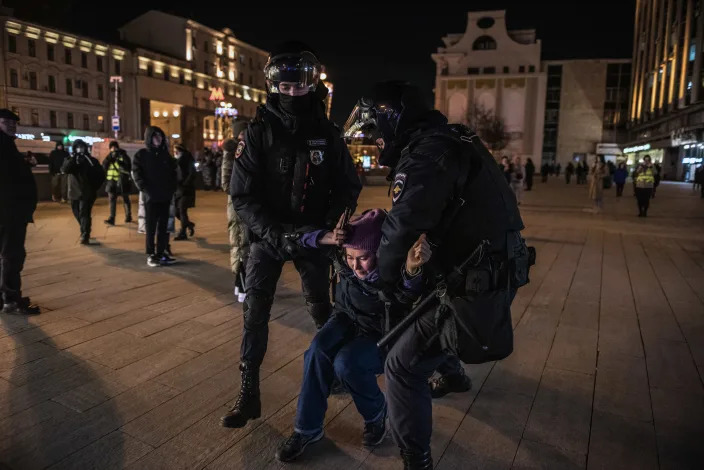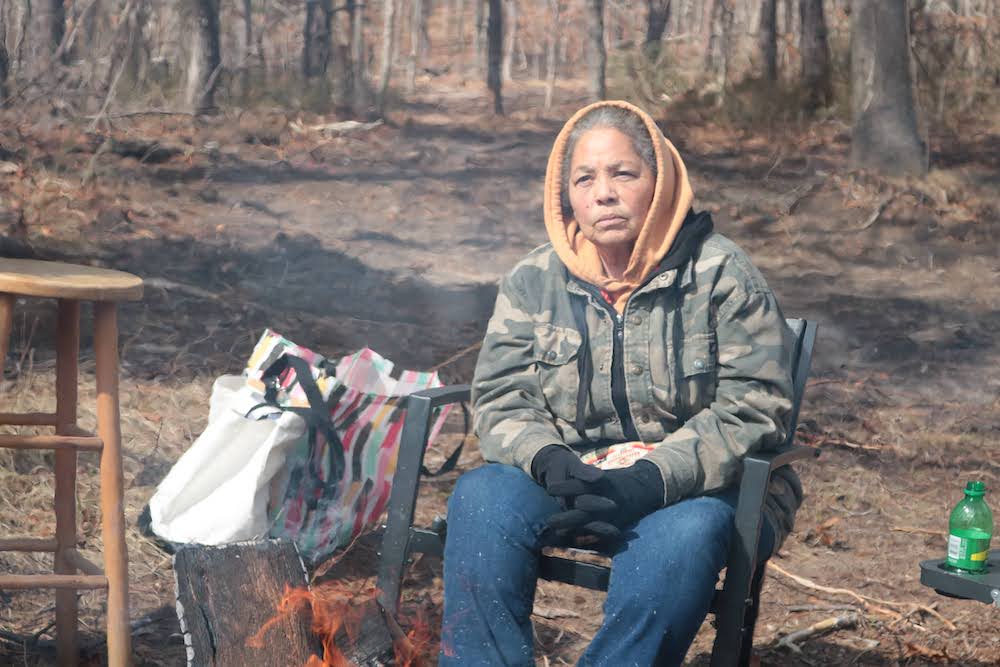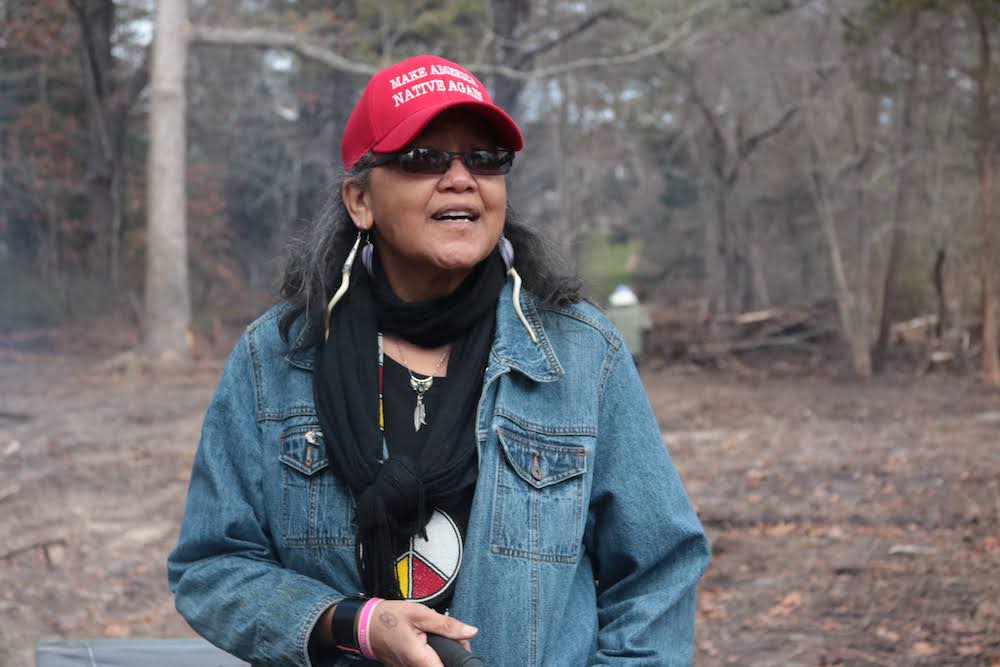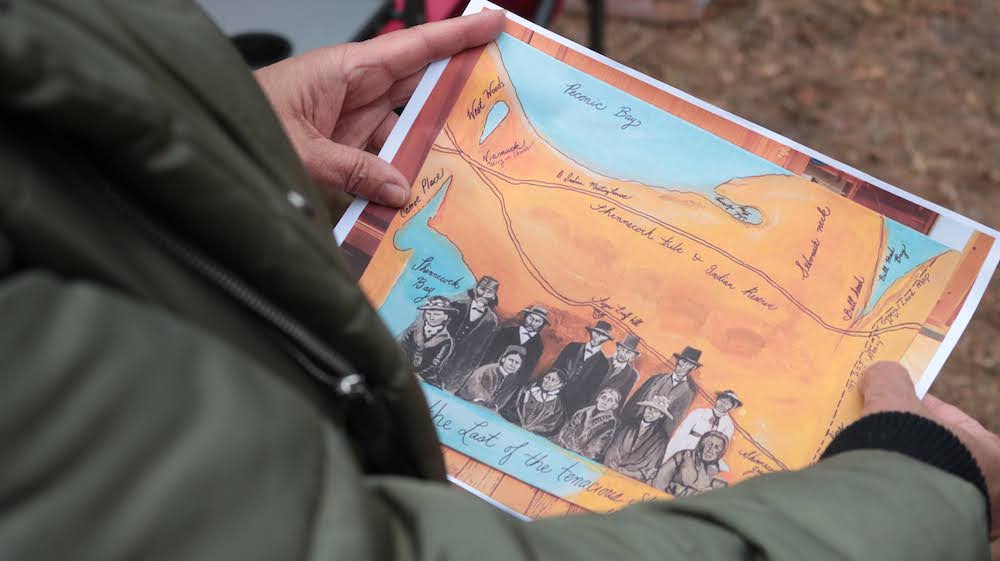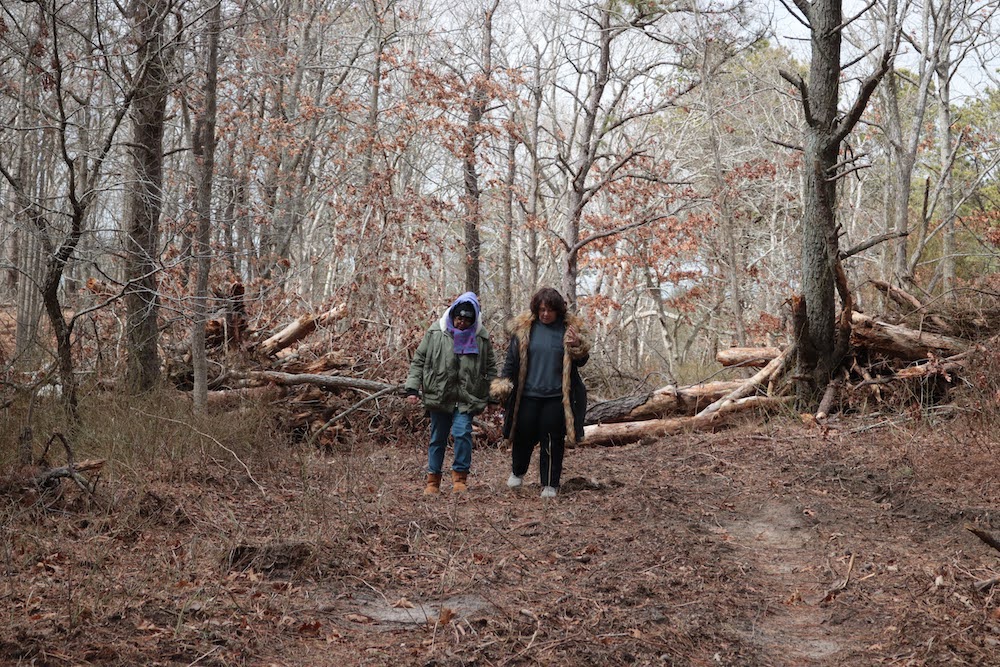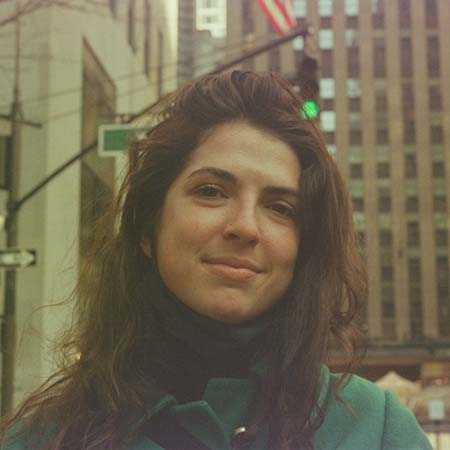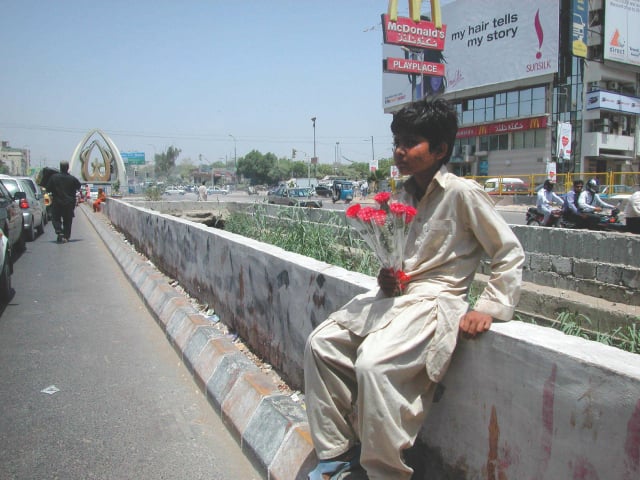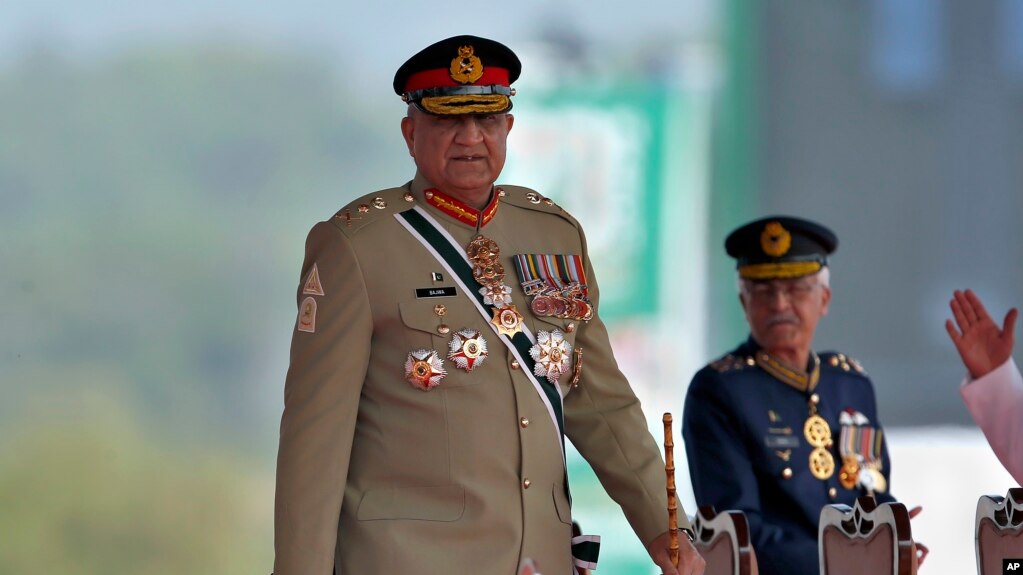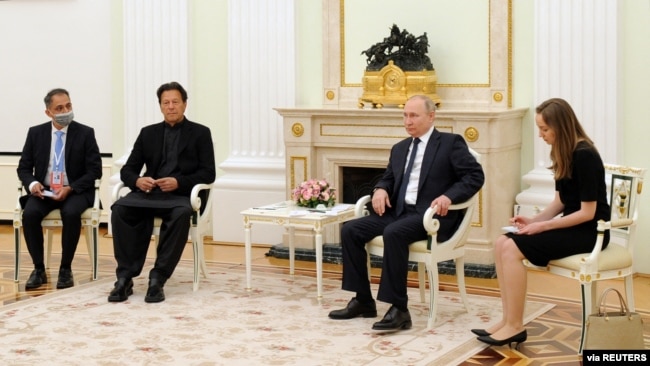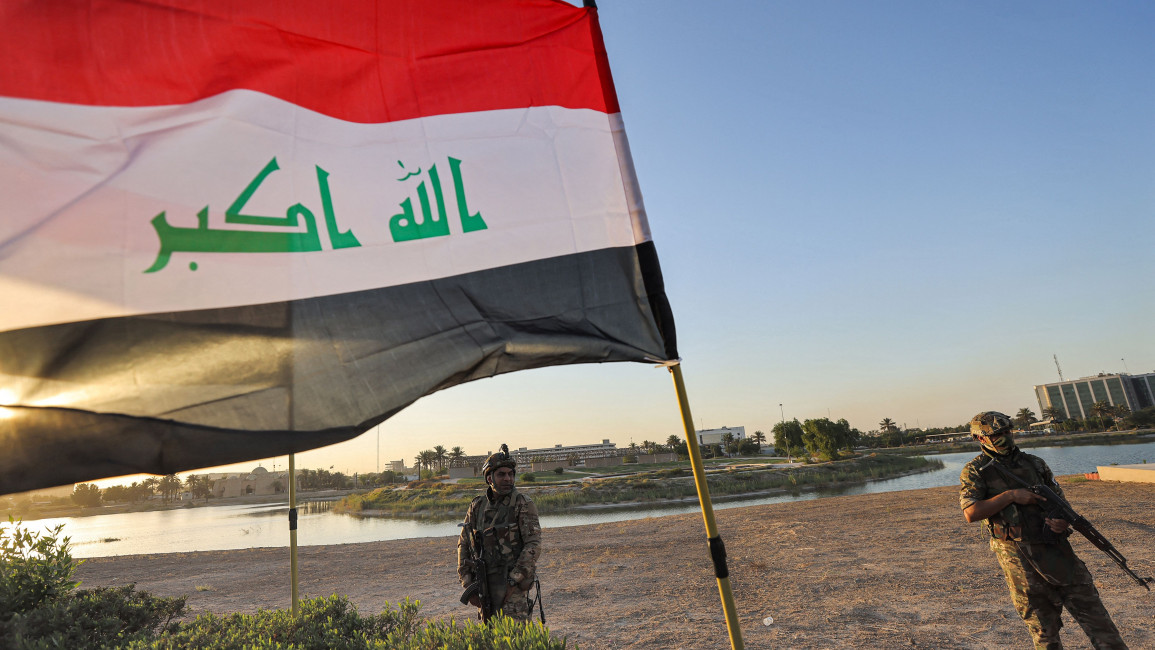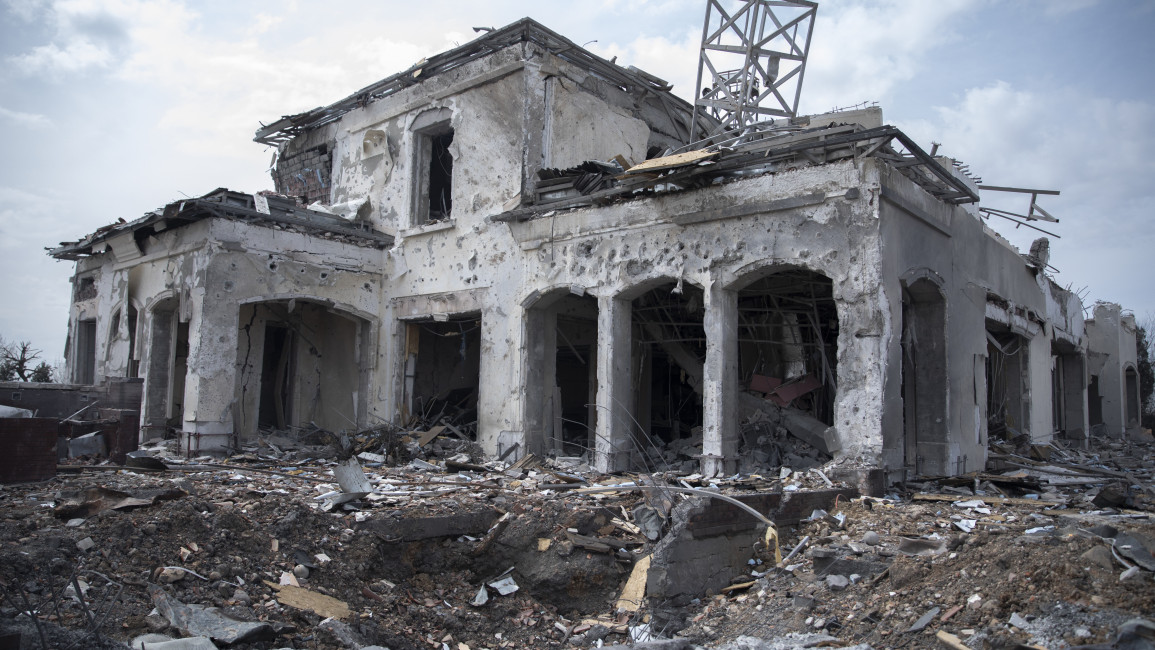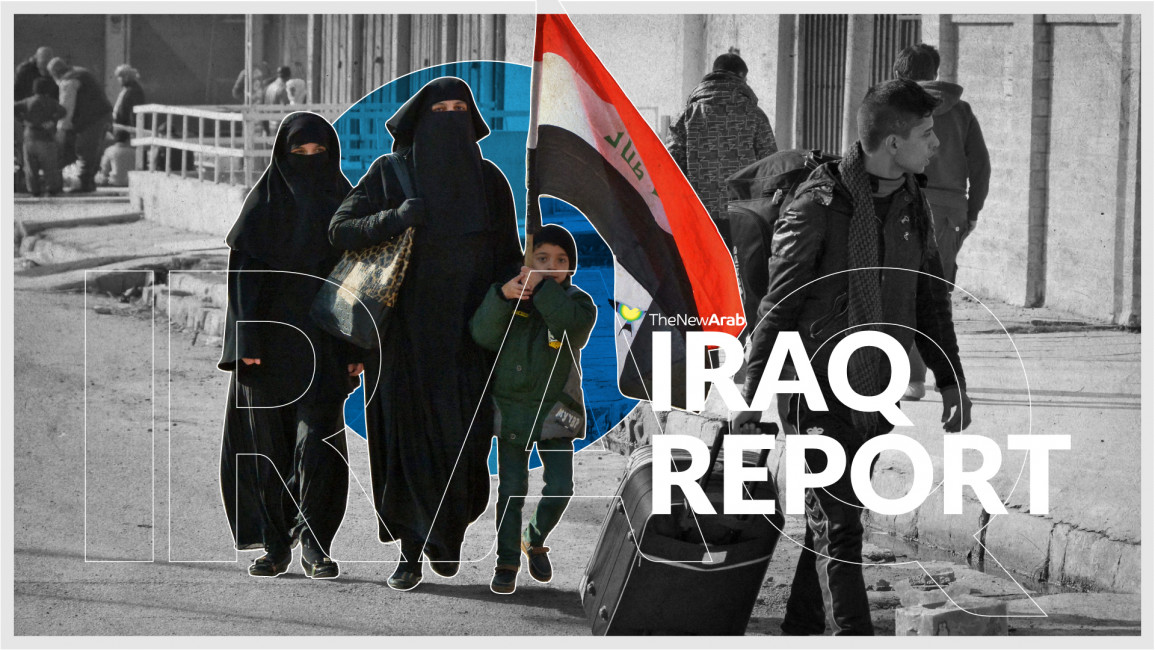Russians rally to Putin, who hits 83% approval
Sat, April 2, 2022,
Polls and interviews show many Russians now accept the Kremlin’s assertion that their country is under siege from the West, the New York Times reports.
Driving the news: Polls released this week by Russia’s most respected independent pollster, Levada, put Putin's approval rating at 83%, up from 69% in January.
81% said they supported the war, citing the "need to protect Russian speakers as its primary justification," per the Times.
"Opponents are leaving the country or keeping quiet," The Times notes.
Entertainment shows on television have been replaced by propaganda.
Between the lines: Moscow signals it's ready for a prolonged war: "Many Ukrainian officials and military analysts think the conflict is likely to drag on for months, or longer," The Wall Street Journal reports.
"Putin’s Ukraine quagmire": The Washington Post's Griff Witte points to echoes of Soviet failure in Afghanistan, 1979-89: "Moscow appears to have underestimated its adversary this time, just as it did then."
Milton Bearden, a CIA station chief in Pakistan during the Soviet war, writes for Foreign Affairs in "Putin's Afghanistan": "In setting out to reverse history, [Putin] may instead be repeating it."
Shaken at First, Many Russians Now Rally Behind Putin's Invasion
The stream of anti-war letters to a lawmaker in St. Petersburg, Russia, has dried up. Some Russians who had criticized the Kremlin have turned into cheerleaders for the war. Those who publicly oppose it have found the word “traitor” scrawled on their apartment door.
Five weeks into President Vladimir Putin’s invasion of Ukraine, there are signs that the Russian public’s initial shock has given way to a mix of support for their troops and anger at the West. On television, entertainment shows have been replaced by extra helpings of propaganda, resulting in a round-the-clock barrage of falsehoods about the “Nazis” who run Ukraine and American-funded Ukrainian bioweapons laboratories.
Polls and interviews show that many Russians now accept Putin’s contention that their country is under siege from the West and had no choice but to attack. The war’s opponents are leaving the country or keeping quiet.
Sign up for The Morning newsletter from the New York Times
“We are in a time machine, hurtling into the glorious past,” said Solomon Ginzburg, an opposition politician in the western Russian region of Kaliningrad. He portrayed it as a political and economic regression into Soviet times. “I would call it a devolution, or an involution.”
The public’s endorsement of the war lacks the patriotic groundswell that greeted the annexation of Crimea in 2014. But polls released this week by Russia’s most respected independent pollster, Levada, showed Putin’s approval rating hitting 83%, up from 69% in January. Eighty-one percent said they supported the war, describing the need to protect Russian speakers as its primary justification.
Analysts cautioned that as the economic pain wrought by sanctions deepens in the coming months, the public mood could shift yet again. Some also argued that polls in wartime have limited significance, with many Russians fearful of voicing dissent, or even their true opinion, to a stranger at a time when new censorship laws are punishing any deviation from the Kremlin narrative with as much as 15 years in prison.
But even accounting for that effect, Denis Volkov, Levada’s director, said his group’s surveys showed that many Russians had adopted the belief that a besieged Russia had to rally around its leader.
Particularly effective in that regard, he said, was the steady drumbeat of Western sanctions, with airspace closures, visa restrictions and the departure of popular companies like McDonald’s and Ikea feeding the Kremlin line that the West is waging an economic war on the Russian people.
“The confrontation with the West has consolidated people,” Volkov said.
As a result, those who still oppose the war have retreated into a parallel reality of YouTube streams and Facebook posts increasingly removed from the broader Russian public. Facebook and Instagram are now inaccessible inside Russia without special software, and Russia’s most prominent independent outlets have all been forced to shut down.
In the southern city of Rostov-on-Don, near the border with Ukraine, a local activist, Sergei Shalygin, said that two friends who had previously joined him in pro-democracy campaigns had drifted into the pro-war camp. They have taken to forwarding him Russian propaganda posts on the messaging app Telegram that claim to show atrocities committed by Ukrainian “fascists.”
“There’s a dividing line being drawn, as in the Civil War,” he said, referring to the aftermath of the Russian Revolution a century ago. “It was a war of brother against brother, and now something similar is happening — a war without blood this time, but a moral one, a very serious one.”
Shalygin and other observers elsewhere in Russia pointed out in interviews that most supporters of the war did not appear to be especially enthusiastic. Back in 2014, when Russia annexed Crimea in a quick and bloodless campaign, he recalled, every other car seemed to sport the orange-and-black St. George’s ribbon, a symbol of support for Putin’s aggressive foreign policy.
Now, while the government has tried to popularize the letter “Z” as an endorsement of the war, Shalygin said it’s rare to see a car sporting it; the symbol is mainly popping up on public transit and government-sponsored billboards. The “Z” first appeared painted on Russian military vehicles taking part in the Ukraine invasion.
“Enthusiasm — I don’t see it,” said Sergei Belanovsky, a prominent Russian sociologist. “What I rather see is apathy.”
Indeed, while the Levada poll found 81% of Russians supporting the war, it also found that 35% of Russians said they paid “practically no attention” to it — indicating that a significant number reflexively backed the war without having much interest in it. The Kremlin appears keen to keep it that way, continuing to insist that the conflict must be called a “special military operation” rather than a “war” or an “invasion.”
But for those who watch television, the propaganda has been inescapable, with additional newscasts and high-octane talk shows replacing entertainment programming on state-controlled channels.
On Friday, the program schedule for the Kremlin-controlled Channel 1 listed 15 hours of news-related content, compared with five hours the Friday before the invasion. Last month, the channel launched a new program called “Antifake” dedicated to debunking Western “disinformation,” featuring a host best known for a show about funny animal videos.
In a phone interview from the Siberian city of Ulan-Ude, Stanislav Brykov, a 34-year-old small-business owner, said that while war was a bad thing, this one had been forced on Russia by the United States. As a result, he said, Russians had no choice but to unite around their armed forces.
“It would be a shame for those servicemen protecting our interests to lose their lives for nothing,” Brykov said.
He put a friend named Mikhail, 35, on the phone. Mikhail had criticized the government in the past, but now, he said, it was time to put disagreements aside.
“While people are frowning at us everywhere outside our borders, at least for this period of time, we have to stick together,” Mikhail said.
The war’s opponents are becoming targets of pervasive propaganda that depicts them as the enemy within. Putin set the tone in a speech March 16, referring to pro-Western Russians as “scum and traitors” to be cleansed from society.
In the past two weeks, a dozen activists, journalists and opposition figures in Russia have arrived home to find the letter “Z” or the words “traitor” or “collaborator” on their doors.
Aleksei Venediktov, the former editor-in-chief of Echo of Moscow, the liberal radio station forced to shut down in early March, said he found a severed pig’s head outside his door last week and a sticker that said “Jewish pig.” On Wednesday, Lucy Stein, a member of the protest group Pussy Riot who sits on a municipal council in Moscow, found a photo of herself taped to her apartment door with a message printed on it: “Don’t sell your homeland.”
She said she suspected a secretive police unit was behind the attack, though Dmitri Peskov, the Kremlin’s spokesperson, on Thursday said such incidents were “hooliganism.”
Anti-war protests, which led to more than 15,000 arrests across the country in the first weeks of the war, have largely petered out. By some estimates, several hundred thousand Russians have fled amid outrage over the war and fear of conscription and closed borders; a trade organization said that at least 50,000 tech workers alone had left the country.
In St. Petersburg, which had been the site of some of the biggest protests, Boris Vishnevsky, a local opposition lawmaker, said he had received about 100 letters asking him “to do everything” to stop the war in its first two weeks, and only one supporting it. But after Putin signed legislation effectively criminalizing dissent over the war, that stream of letters dried up
“These laws have been effective because they threaten people with prison terms,” he said. “If not for this, then the change in public opinion would be rather clear, and it wouldn’t be to the benefit of the government.”
In a phone interview, a political analyst in Moscow, 45, described visiting police stations across the city in the past month after her teenage child’s repeated arrests at protests. Now, the teenager is receiving threats on social media, leading her to conclude that authorities had passed along her child’s name to people who bully activists online.
But she also found that the police officers she dealt with did not seem particularly aggressive, or enthusiastic about the war. Overall, she believed that most Russians were too scared to voice opposition, and were convinced that there was nothing they could do about it. She asked that her name not be published for fear of endangering her and her child.
“This is the state of someone who feels like a particle in the ocean,” she said. “Someone else has decided everything for them. This learned passivity is our tragedy.”
© 2022 The New York Times Company

